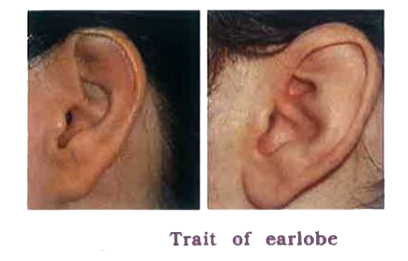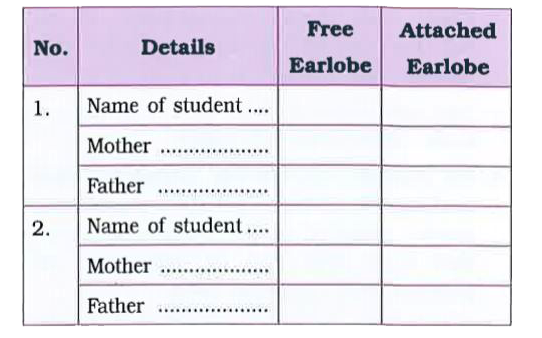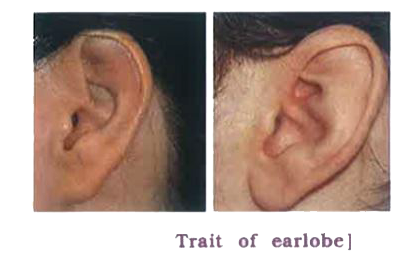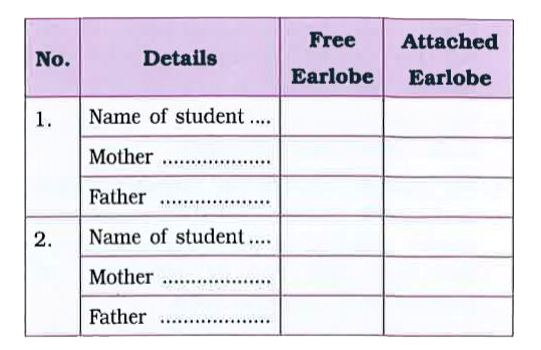You observed trait of earlobe whether they are free or attached in four different couples, along with their children.
Couple has children with 1:1 ratio for free and attached earlobe. What do you think about their father-mother for this trait ?Solution in Gujrati
Any one parent has attached earlobe and other parent has free earlobe with contrasting genes.
Topper's Solved these Questions
- BOOK - KUMAR PRAKASHANCHAPTER - HEREDITY AND EVOLUTIONEXERCISE - VALUE BASED QUESTIONS WITH ANSWERS15videos
HEREDITY AND EVOLUTION
- BOOK - KUMAR PRAKASHANCHAPTER - CONTROL AND COORDINATIONEXERCISE - PRACTICAL SKILL BASED QUESTIONS WITH ANSWERS8videos
CONTROL AND COORDINATION
- BOOK - KUMAR PRAKASHANCHAPTER - HOW DO ORGANISMS REPRODUCE?EXERCISE - PRACTICAL SKILL BASED QUESTIONS WITH ANSWERS5videos
HOW DO ORGANISMS REPRODUCE?
Similar Questions
Which theory/hypothesis was proposed by Charles Darwin ?
08:55View SolutionFour different students of your class observed network of neurons in a slide under microscope. They drew a diagram of synaptic junction.
From your knowledge.
Which of the following figures shows the correct pathway for the conduction of impulse ?02:20View SolutionCollect different flowers such as Maize, Sunflower, Papaya, Hibiscus, Datura, Rose, Crinum, etc. Which of them are bisexual ? Draw diagram of any one bisexual flower and state function of each parts.
03:28View SolutionIn human, attached earlobes are a dominant feature over free earlobes while hypertrichosis (Y-linked) feature. A man with attached earlobed and extensive hair on pinna married a woman having free earlobes. The couple had one son with free earlobes and hairy pinna and two daughters with attached earlobes. One of the daughters with attached earlobes. One of he daughters married a man with free earlobes and sparse hair on pinna. They had two sons. What would be the characteristics of their ponnae ?
04:01View Solutionऐसे दम्पत्ति जिनके बच्चे नहीं है, उनके लिए संतान प्राप्ति का सर्वोत्तम उपाय कौन-सा है ?
02:12View SolutionThink of your own family, what similarities do you share with your father and mother? Draw a table to represent the similarities of some characters like colour of eye (cornea), colour of hair, shape of nose, shape of face, type of earlobe (attached or free) inner thumb markings, etc. Write your characters in one column and that of your parents in the other columns. (Q) How do you think these characters may have been inherited by you from grandma
View SolutionThink of your own family, what similarities do you share with your father and mother? Draw a table to represent the similarities of some characters like colour of eye (cornea), colour of hair, shape of nose, shape of face, type of earlobe (attached or free) inner thumb markings, etc. Write your characters in one column and that of your parents in the other columns.
(Q) where do you think your mother got tat charcter from ?03:38View SolutionGiven below is a pedigree chart of a family with five children. It shows the inheritance of attached earlobes as opposed to the free ones. The squares represent the male individulas and circules the female individuals. Which one of the following conclusions drawn is correct?
02:09View SolutionThe earlobe variants found in human population are
(i) free. (ii) curved (iii) round. (iv) attached.View SolutionA couple has two children-a boy and a girl. Both the parents have detached ear lobes while th children have attached ear lobes? a] How is this possible? b] Please write the genotypes of the mother, father, te boy and the girl . (Clue: attached earlobe is represented as e while the detached as E)
01:31View SolutionTo suggest rule for inheritance of earlobe type. Procedure /Method : rarr The lowest part of the ear pinna called the earlobe, is closely attached to the side of the head, i.e., attached or not, i.e., free. rarr Observe the earlobes of all the students in the class. Prepare a list of students. Enter the data about the earlobes whether they are free or attached. rarr Find out about the earlobes of the parents of each student in the class. rarr Correlate earlobe type of each student with that of their parents. rarr In the column write F for free earlobe and A for attached earlobe. Answer the following questions on the basis of the collected data: Which expression of earlobe is observed more in number in your class?
View SolutionTo suggest rule for inheritance of earlobe type. Procedure /Method : rarr The lowest part of the ear pinna called the earlobe, is closely attached to the side of the head, i.e., attached or not, i.e., free. rarr Observe the earlobes of all the students in the class. Prepare a list of students. Enter the data about the earlobes whether they are free or attached. rarr Find out about the earlobes of the parents of each student in the class. rarr Correlate earlobe type of each student with that of their parents. rarr In the column write F for free earlobe and A for attached earlobe. Answer the following questions on the basis of the collected data: Are the types of earlobes hereditary?
01:36View SolutionTo suggest rule for inheritance of earlobe type. Procedure /Method :
→ The lowest part of the ear pinna called the earlobe, is closely attached to the side of the head, i.e., attached or not, i.e., free.
→ Observe the earlobes of all the students in the class. Prepare a list of students. Enter the data about the earlobes whether they are free or attached.
→ Find out about the earlobes of the parents of each student in the class.
→ Correlate earlobe type of each student with that of their parents.
→ In the column write F for free earlobe and A for attached earlobe.


Answer the following questions on the basis of the collected data:
From your collected data state which expression is dominant and which one is recessive for earlobe.03:18View SolutionTo suggest rule for inheritance of earlobe type. Procedure /Method :
→ The lowest part of the ear pinna called the earlobe, is closely attached to the side of the head, i.e., attached or not, i.e., free.
→ Observe the earlobes of all the students in the class. Prepare a list of students. Enter the data about the earlobes whether they are free or attached.
→ Find out about the earlobes of the parents of each student in the class.
→ Correlate earlobe type of each student with that of their parents.
→ In the column write F for free earlobe and A for attached earlobe.


Answer the following questions on the basis of the collected data:
Determine the percentage of free earlobe and attached earlobe in the students of your classroom.03:58View SolutionYou observed trait of earlobe whether they are free or attached in four different couples, along with their children.
Couple has all the children with free ear- lobe even mother has attached earlobe. What do you think about father's earlobe ?View Solution

